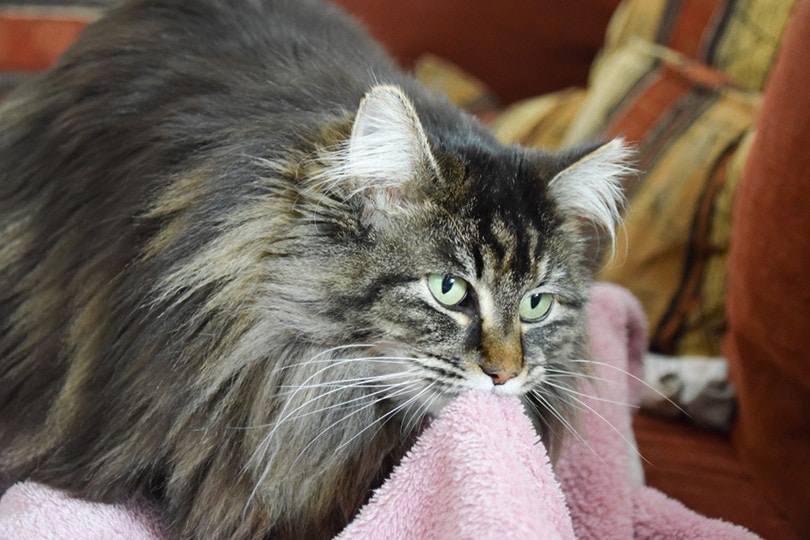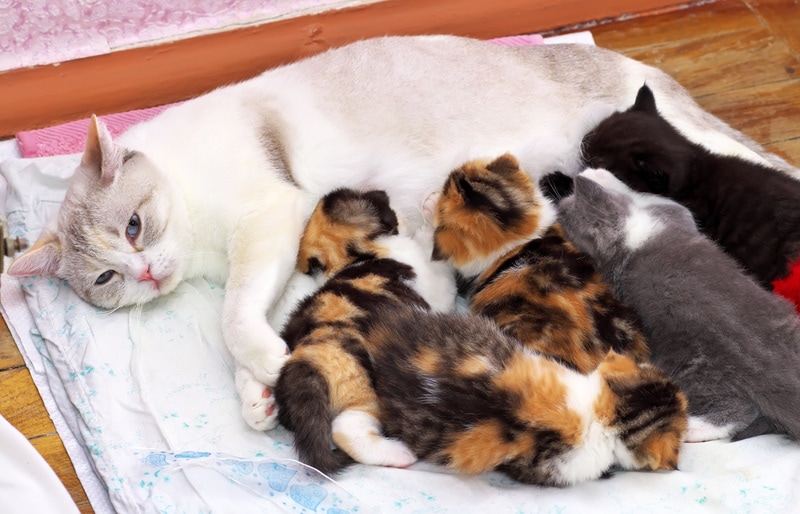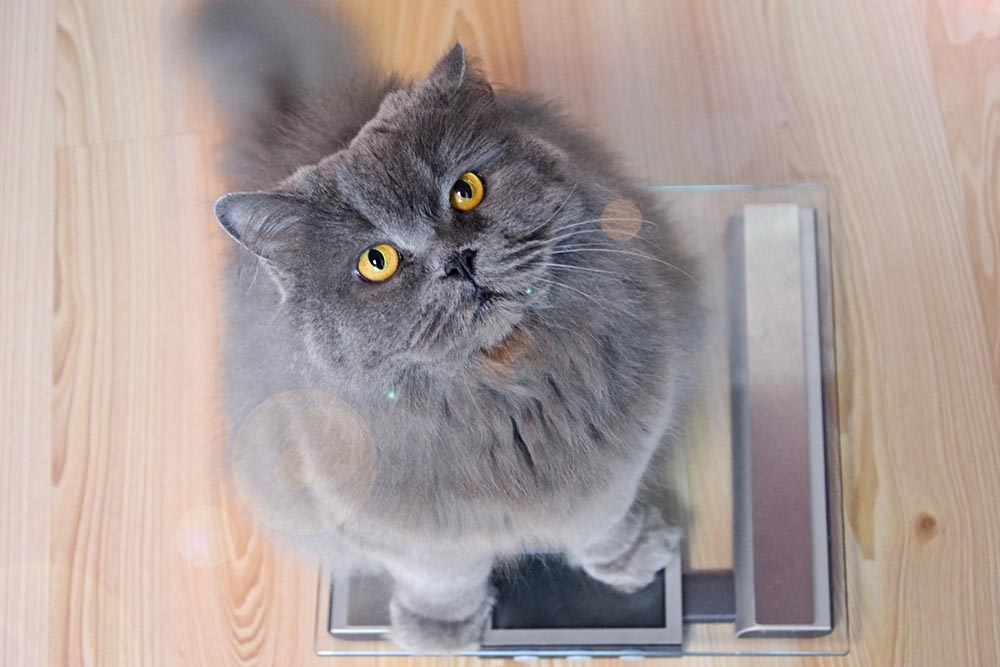Why Do Cats Curl Their Paws? (7 Likely Reasons)

Updated on
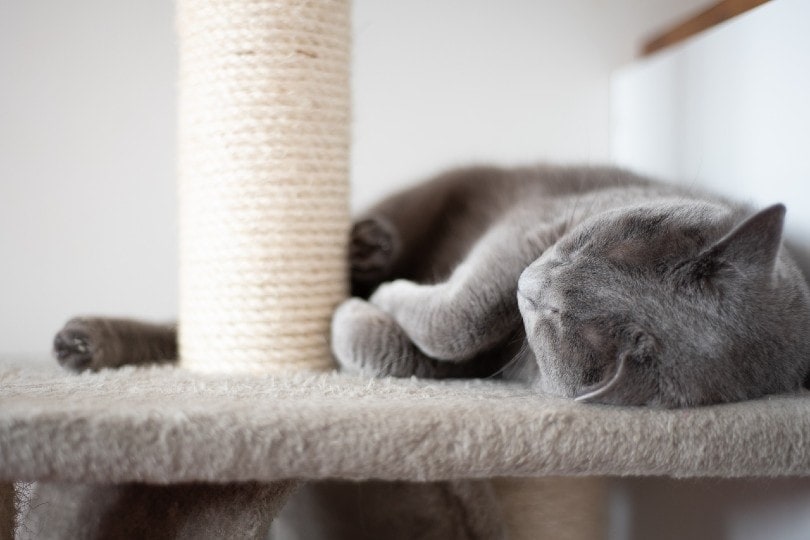
Cat paws are one of the unique features of felines, and while their claws are retracted, and the paw is relaxed, we are given a moment to observe just how cute they are. The moment is usually short-lived because most cats usually have their paws curled and tucked away, disappearing into their chests while they sleep.
Cats commonly curl their paws, and it’s a phenomenon that has straightforward reasons, such as simple habit or comfort. In this article, we’ll examine the likely reasons why your cat is curling its paws and how you can determine which reason applies to your cat, so you can be sure that your cat is happy and healthy.
The 7 Reasons Why Your Cat Is Curling Their Paws
1. Sign of Comfort
One of the fascinating things about cats is their ability to find and feel comfortable in the most unassuming places. Usually, when you find them blissed out in their favorite spots, they are lying or sitting with their paws curled in.
Generally, a cat that is lying with its paws tucked or curled underneath is considered to be relaxed and comfortable. There are a few positions you may find your cat curled up in, but the paw-curling stance is very common and is usually a comfortable and relaxed position for cats.
2. Warmth
Cats will also curl their paws to keep warm and retain body heat in the cooler months. If you think about your sleeping and resting positions when it’s cold, you may sleep in a fetal position with your arms tucked in close to your chest or sit on the sofa like a ball with your arms folded or tucked in to keep warm.
Cats often use a similar position. A cat’s paws will also lose heat faster, just like a human’s fingers or toes, so by curling them in, they can keep them warm and protect them from the cold.
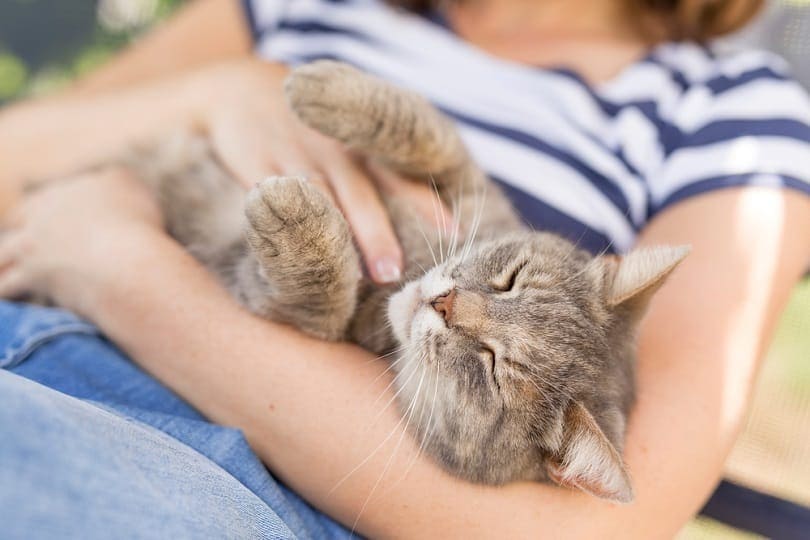
3. Your Cat May Want to Be Alone
If your cat is curling its paws and acting more aloof than usual, it may indicate that your cat wants to be alone. Although cats are generally friendly with their owners, there are times, just like humans, when they need some alone time.
In this case, their personal space should be respected, and you should allow your cat to enjoy some time alone. If you reach out for cuddles, don’t be alarmed or offended if your cat darts off.
4. Your Cat May Be on Alert
Hunting is an instinct for cats, and it was more prevalent in their everyday lives before they were domesticated and had to hunt for food. When cats curl their paws in, they can stay reactive while being comfortable. They are ready to pounce into action if they are exposed to any perceived threat. You may have noticed how quickly your cat will swat at a moth flapping too close to its face or how fast it leaps up and runs if something causes a loud and startling noise.
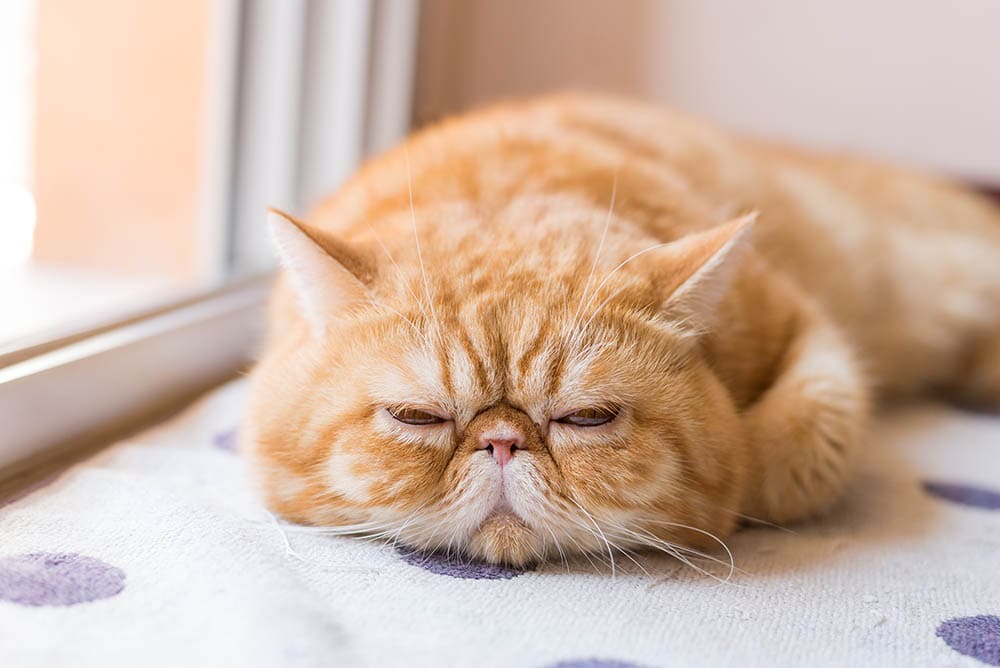
5. Your Cat May Be Uncomfortable
Even though your cats’ paws curled in are a sign of comfort, it could also mean the opposite. When a cat is not feeling well, it will try to get comfortable. If your cat seems lethargic and spends most of its day in the same position, it could be because it is feeling ill or in pain.
Cats are usually very good at hiding discomfort, so if you notice that your cat’s paws are tucking in for longer than usual and they pull them away from you, you should check their paws for any sign or injury. If you are unsure and your cat behaves differently, you should contact your vet.
6. Catnapping
The average cat sleeps 15–20 hours per day, and many people are unaware that cats have three types of sleep: cat naps, light sleep, and deep sleep. Cats are most active between dusk and dawn, which means they sleep most of the day and become active at nighttime. During the day, they will have a catnap or few, where they will relax their bodies and close their eyes, but they will still be alert.
A cat in a sleepy or comfortable position, like the loaf position with its paws curled in and tired eyes that aren’t fully closed, may indicate that your cat is just catching a catnap.
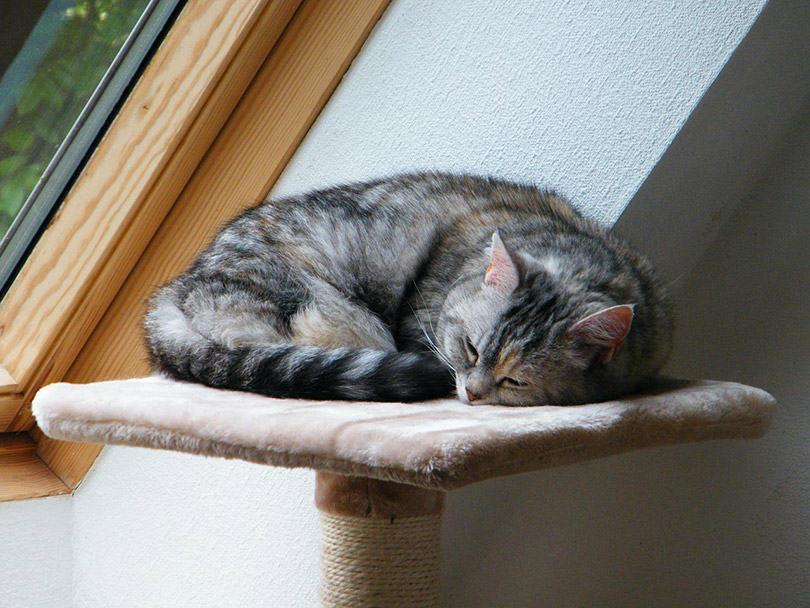
7. It’s a Common Habit with Some Cats
It may be a habit if your cat is curling its paws in. Cats curl in their paws for various reasons, which are related to instinctual body behavior. Whether for comfort, alertness, warmth, sleep, or even pain, their paws will likely be curled for many hours of the day. This common position can easily become a habit, and your cats’ paws could be curled in because it is an unconscious body behavior.
How to Tell Which Reason Applies to Your Cat
The best way to interpret why your cat’s paws are curled is to learn to read its body language. Your cat’s body language includes the use of its tail, ears, eyes, and body. By understanding and learning about your cat’s communication tools, you will be able to interpret what mood it may be in or if something is not quite right.
Observing Their Ears
Watching your cat’s ears can help you determine if your cat is feeling relaxed, focused, or afraid. When a cat is feeling relaxed, its ears will usually point up and slightly to the side, but if it is alerted or something has caught its attention, its ears will usually perk up or twitch to determine where the sound is coming from. However, when a cat feels afraid or angry, their ears will be flattened. This is also a common indication that they want to be left alone.

Observing Their Eyes
Your cat’s eyes can also reveal how they are feeling. When they are soft and partially closed, along with their curled paws, it usually means your cat is feeling relaxed. If their eyes are wide and alert, it will usually be paired with a tense posture which may indicate that your cat is ready to pounce or run. Your cat may appear relaxed with its paws curled in and its drifting eyes, but if you touch your cat and its tail swings round like a whip, it could indicate that it wants to be left alone.
Listening to Vocalizations
You can also listen to your cat’s vocalizations to determine its mood. A purr or short chirp usually signals affection or playfulness, while a loud, drawn-out meow may indicate that your cat is hungry. A yowl, screech, or meowing more than usual could signal that your cat is in pain, so you should get it to the vet to be checked.
Do All Cats Curl Their Paws?
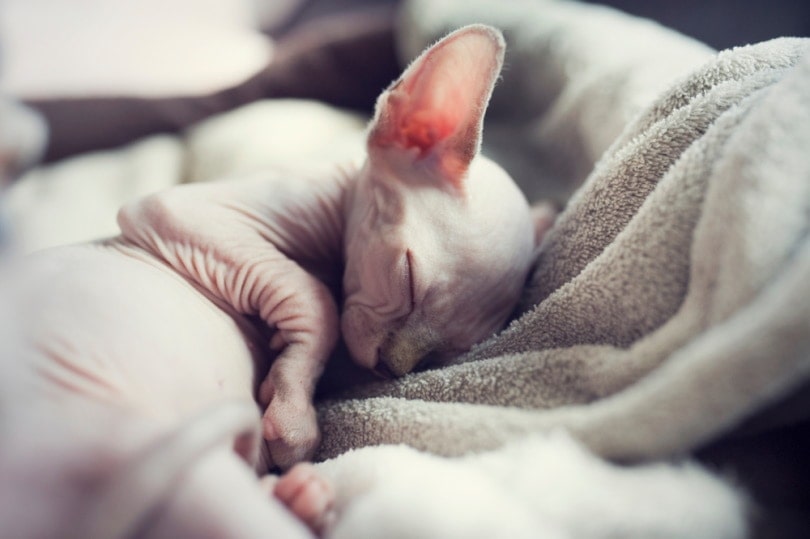
While some cats prefer to relax in a loafing position, some don’t, but that doesn’t necessarily mean that your cat isn’t comfortable; it could just be that it prefers a different position. Some cats like to keep their front paws crossed in front of them, while some prefer to be on their back with their feet in the air or on their tummy with their legs straight out.
Summary
Most cats are comfortable when curled up like a loaf of bread in their favorite spot, with their paws curled against their chest. Comfort, warmth, and preference are the most likely reasons, and this position allows your cat to relax while being alert and ready to pounce or swat when a potential threat is identified. It can also mean that your cat is uncomfortable or in pain, so checking their paws is essential to ensure they’re not injured.
See Also:
- Why Don’t Cats Like Their Paws Touched?
- 8 Reasons Your Cat is Holding Their Paw Up When Sitting (Know Your Cat)
Featured Image Credit: husnerova, Pixabay

